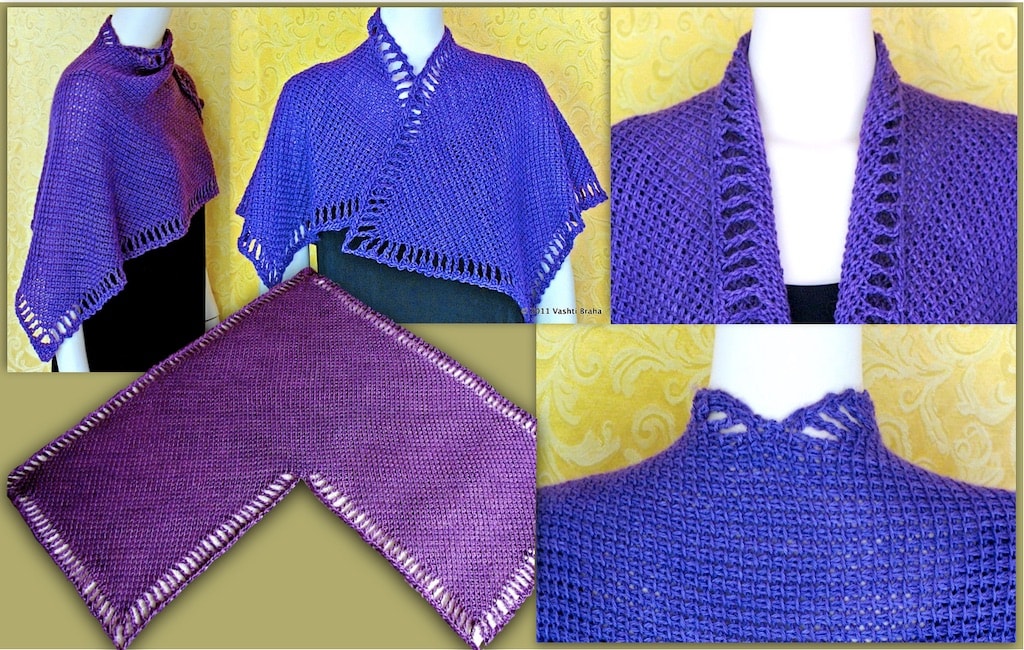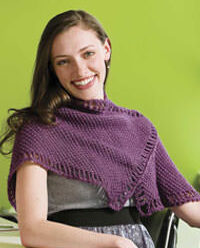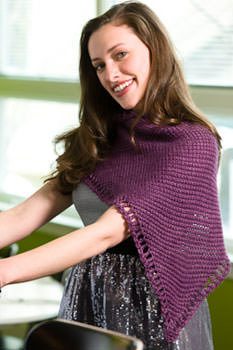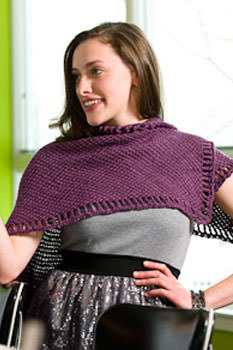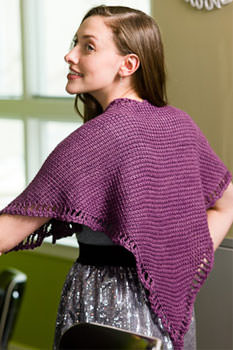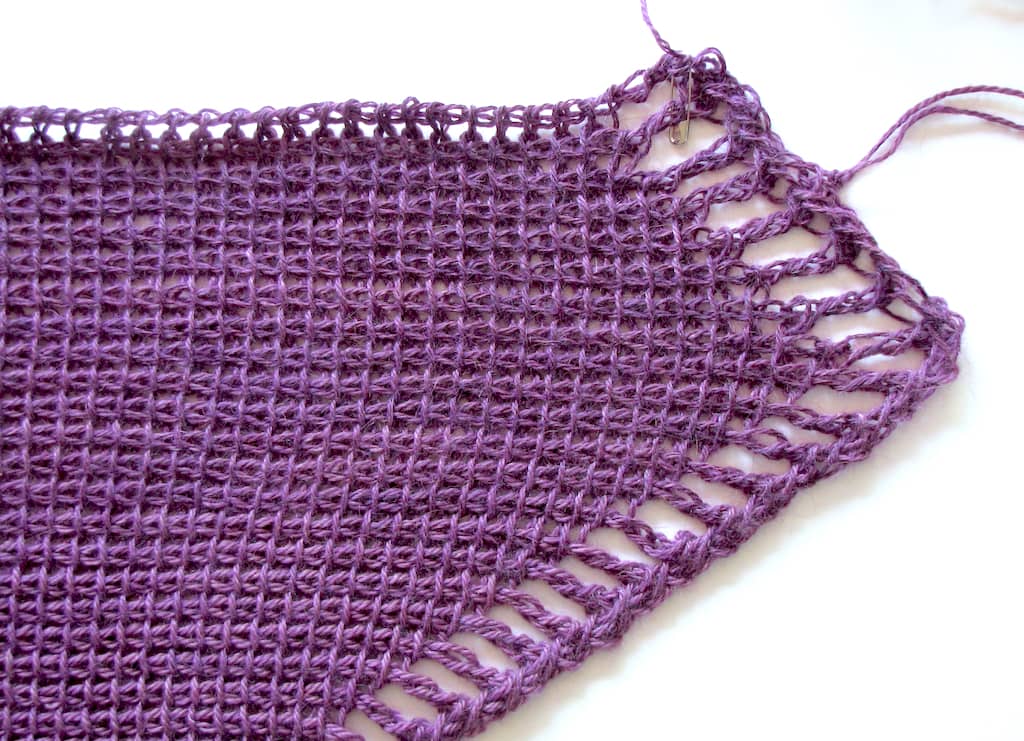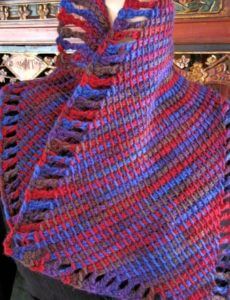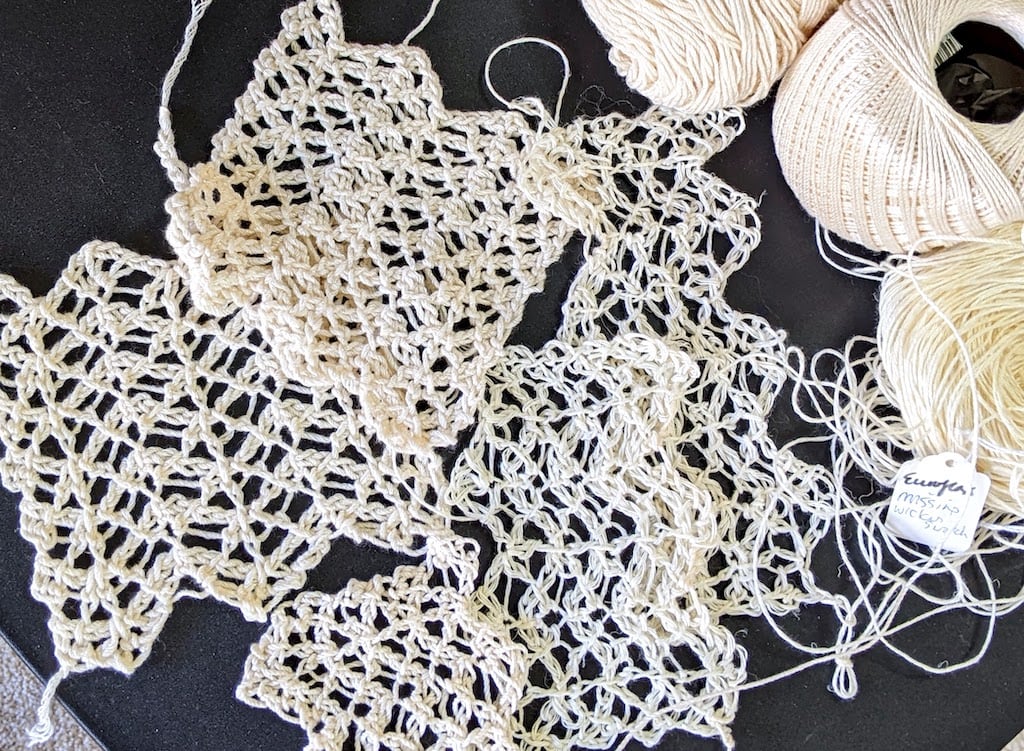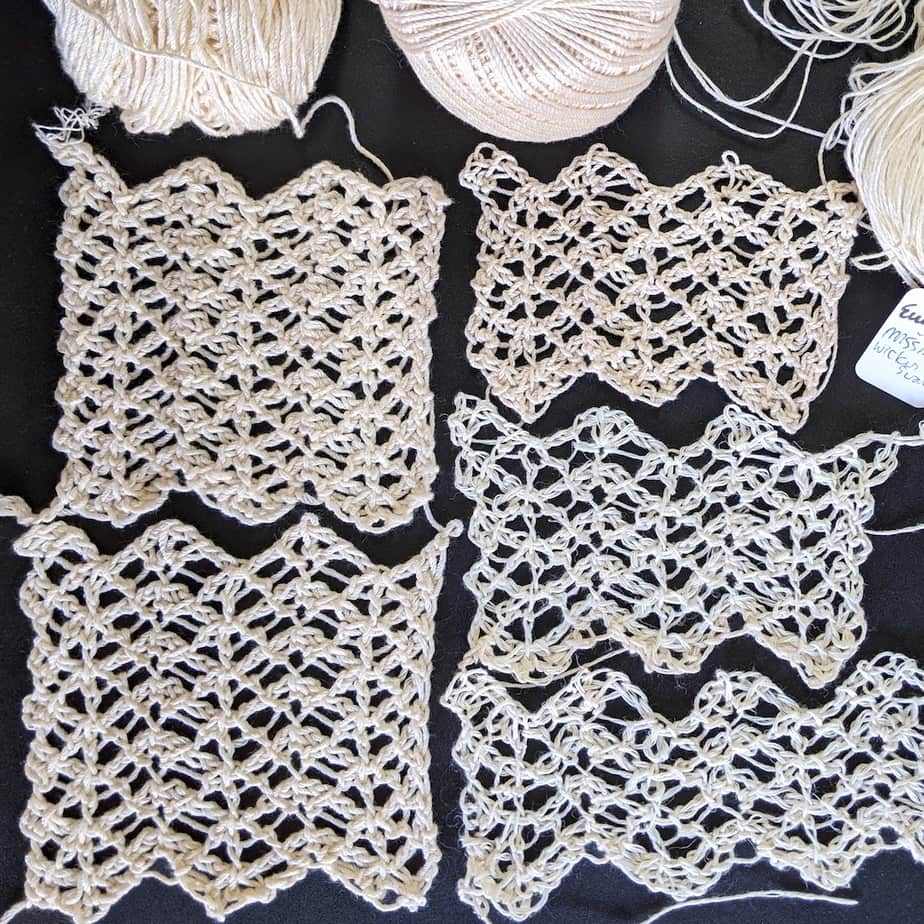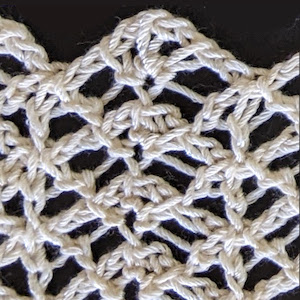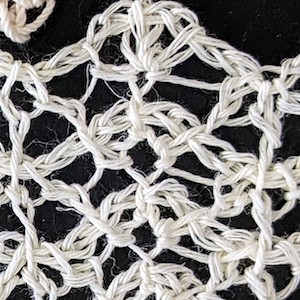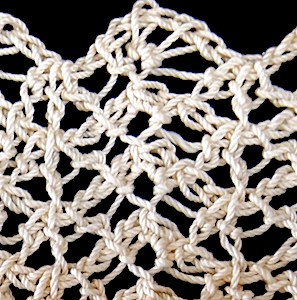This clickable list of Tunisian crochet lace resources is mainly to aid students of my classes in exploring more about Tunisian lace crochet at their leisure. The links below represent the extra information that doesn’t fit into a standard three-hour class. Some are the names of designers, books, other types of crochet lace, etc., that I may have mentioned in a class.
Click: My published Tunisian Crochet downloadable patterns
— Vashti Braha
Tunisian Lace Crochet Class Resources
Click on a photo to enlarge it.
Blogged:
- “Five Basic Rules in Tunisian Crochet Patterns”
- “Tunisian Crochet Lace: New Habits” (for Tunisian lace beginners)
- “A Powerful Tunisian Crochet Stitch to Love” (the Tunisian Extended Knit Stitch)
- “Crocheting a Triangular Shawl Point to Point”
- “The Weightless Tunisian Crochet Stole”
- “My Favorite Way to Add a Professional Look Fast” (blocking lace with mist as you go)
Vashti’s Crochet Inspirations Newsletter Topics:
- Issue #28 “Mohairs for Crochet” (Weightless Wrap is the ultimate example)
- Issue #26 “Fun With Stitch Blocking” (Uses Tunisian extended stitches as examples)
- Issue #24 “Mirroring Stitch Types” (Tunisian Filet Lace vs. Traditional Filet Crochet)
- Issue #19 “Netting vs. Lace” (Regular and Tunisian filet (grid) types and mesh (diagonal) types)
- Issue #12 “Why Not Twist Some Loops”
- Issue #10 “Tunisian Crochet: Breaking Out of Ruts” (making Tunisian crochet lighter and lacier with the Tyo stitch; a review of a Japanese Tunisian Crochet stitch dictionary)
- Issue #7 “Tunisian Crochet for Yarn ‘Bail Outs'”
- Issue #23 “If Stitch Patterns Could Speak” http://eepurl.com/eSGXo
Some of my not-yet published Tunisian Crochet projects
Story of the Tunisian Wicker Stitch (an eyelet mesh) featured in the Weightless Wrap:
- I created a “storybook page” for this special design.
- Its online photo set: http://www.flickr.com/photos/vashtirama/sets/72157624363282949/
- Online photo set for Liebling Shrug
- Online photo set for Springtime Wicker Scarf
- Pattern versions & outlets:
- Download pattern for Weightless Tunisian Wrap at DesigningVashti.com.
- Download pattern for Weightless Tunisian Wrap in Ravelry.
- Download pattern for Liebling Shrug at DesigningVashti.com.
- Download pattern for Liebling Shrug in Ravelry.
- Find out when Springtime Wicker Scarf is available: subscribe to my newsletter.
Some Valuable Books
- 1997: Basics of Tunisian Crochet for Beginners, N. Seto, Japan. ISBN 978-4-529-029285
- 2000 (1991), Rebecca Jones: Tricot Crochet The Complete Book, Lacis Pubs., Berkeley CA. ISBN 978-1-891656-28-6
- 2004, Angela “ARNie” Grabowski: Encyclopedia of Tunisian Crochet, LoneStar Abilene Pubg LLC, TX. ISBN 978-0-974972-55-8
- 2004, Carolyn Christmas and Dorris Brooks: 101 Easy Tunisian StitchesTM, Annies Attic, IN. ISBN 978-1-931171-74-8
- 2008: Tunisian Crochet Patterns 100, Nihon Amimono Bunka Kyo-kai, Japan ISBN 978-4-529-04484-4
- 2009, Kim Guzman: Learn to Do Tunisian Lace Stitches, Annie’s Attic, IN. ISBN 978-1-59635-264-3
- 2009, Sharon Hernes Silverman: Tunisian Crochet: The Look of Knitting with the Ease of Crocheting, Stackpole Books, Mechanicsburg PA. ISBN 978-0-811704-84-7
- 2014, Kim Guzman: Tunisian Crochet Stitch Guide.
- Duplet magazine issue #61.
